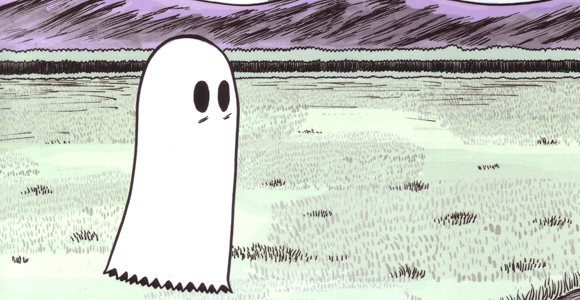Part I – “Ain’t I a stinkah?”
The first and most symbolic barrier between imagination and a complete story in comics and cartooning is a blank page. The blank page represents possibility, and there, at that simple, stripped down level of creation, imagination collides with possibility and the resulting shock, when ideas turn into shapes, into characters, scenes and stories, wildly displaces possibility in favor of concrete, two-dimensional illusions. It’s their kinship with this basic element that makes the shape-shifting character a representation of creation, in cartoons or comics, within the space that gives that character a reason for existing. In their space on the page, with each change, they reenact the collision of imagination and possibility. Just as a model of the Solar System that simulates the revolution of the planets around the Sun, the representation has no meaning without that which it represents.
Shape-shifters aren’t necessarily superior to any other type of character just because they shape-shift: they don’t possess any inherent sympathies with readers that other types of characters don’t have. However, shape-shifters do broaden our knowledge of cartoon and comics territory that they inhabit.
The page is a space, and lines, shapes, colors are tools which, a shape-shifter can use to direct a narrative to the brink of cartoon possibility. Or perhaps, more accurately, he is directed. Such is the case in Chuck Jones’ and Michael Maltese’s phenomenal Looney Tunes sketch entitled “Duck Amuck.” Aired in 1953 and voiced by the incomparable Mel Blanc (a shape-shifter in his own right), “Duck Amuck,” in which Daffy Duck falls prey to a malevolent illustrator and is forced to improvise a number of costumes, styles, dances, gestures and anatomic disfigurements under an increasingly capricious brush, is basically a treatise on the lack of space between one form and another in cartoons. If the illusion of the cartoon is stripped away, the illusion of three-dimensional space, it becomes apparent the only thing stopping cartoons from losing consistent form is the force of their creator*—that is, consistent form within a relatively small amount of time rather than over a large span in which several illustrators draw different interpretations of the same character. It’s true a cartoon gets its vitality from human interaction, but the quality of life is determined by which quality of mind an illustrator harnesses when drawing. In other words, the rate and manner in which shapes change is dependent upon temper.
In “Duck Amuck” the creative process is artificially accelerated to show just how volatile the mixture of temper and cartooning can actually be. For most of the cartoon Daffy moves from right to left along a conveyor-belt style canvass. Each new section of the canvass (roughly two to five seconds in duration) is a new set, new scenery, but Daffy takes it all in stride. He’s a professional, after all. When the illustrator draws a scene with no color, Daffy exclaims, “It may come as a complete surprise to you to find that this is an animated cartoon, and that in animated cartoons they have scenery.” When French hills give way to alpine snow, Daffy becomes a skier; when a Hawaiian island appears, Daffy wields a ukulele and lei. The illustrator within “Duck Amuck,” Daffy’s antagonist**, at one point erases Daffy completely, to which he cries, “Alright, Wise Guy … Where am I?” Daffy undergoes auditory changes as well: trying to throw a tantrum, he’s thwarted by a starling chicken cry coming from within his bill, and at one point he’s stricken mute altogether.
What’s special about Daffy’s role in “Duck Amuck” is that he isn’t a shape-shifter normally: it isn’t a recognizable part of his character. So rather than touting an “anything is possible in cartoons” message, even though that’s entirely true, he shows us that any comics or cartoon character can become a shape-shifter depending on the temper of their illustrator at the time of creation. Anything may be possible, but more importantly it must be acknowledged that a creator is capable of anything. “Duck Amuck,” in seven odd minutes, brings to the forefront everything we already know about cartoons, but that which we gloss over for entertainment’s sake forces us to consider how much can happen on the page when possessed by imagination.
-- Ian Burns
* This is, I admit, an idealistic view in which creators exist in a vacuum wherein the trials of the industry don’t affect the creative process. The reader can assume, then, that I’m speaking about creation at its most primal, pure level.
**SPOILERS!!! It’s Bugs.
































